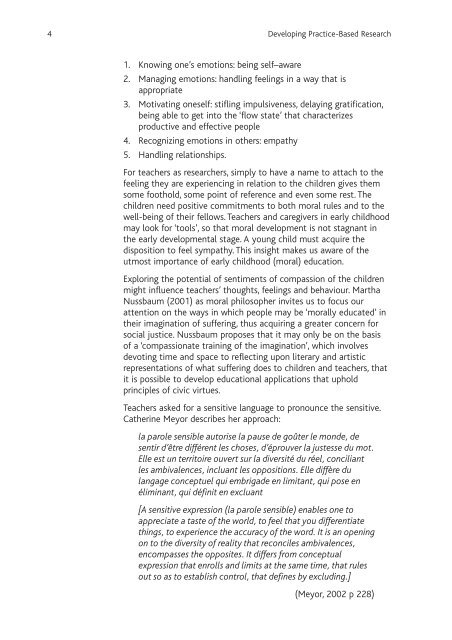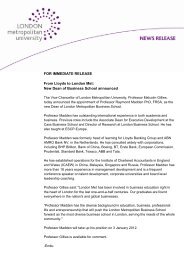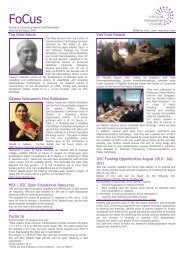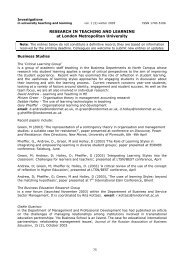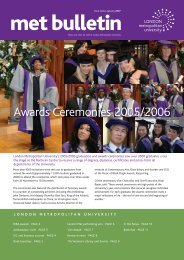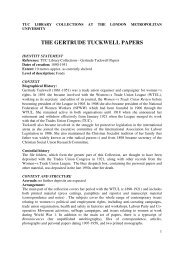Developing practice-based research with persona dolls for
Developing practice-based research with persona dolls for
Developing practice-based research with persona dolls for
Create successful ePaper yourself
Turn your PDF publications into a flip-book with our unique Google optimized e-Paper software.
4<br />
<strong>Developing</strong> Practice-Based Research<br />
1. Knowing one’s emotions: being self–aware<br />
2. Managing emotions: handling feelings in a way that is<br />
appropriate<br />
3. Motivating oneself: stifling impulsiveness, delaying gratification,<br />
being able to get into the ‘flow state’ that characterizes<br />
productive and effective people<br />
4. Recognizing emotions in others: empathy<br />
5. Handling relationships.<br />
For teachers as <strong>research</strong>ers, simply to have a name to attach to the<br />
feeling they are experiencing in relation to the children gives them<br />
some foothold, some point of reference and even some rest. The<br />
children need positive commitments to both moral rules and to the<br />
well-being of their fellows. Teachers and caregivers in early childhood<br />
may look <strong>for</strong> ‘tools’, so that moral development is not stagnant in<br />
the early developmental stage. A young child must acquire the<br />
disposition to feel sympathy. This insight makes us aware of the<br />
utmost importance of early childhood (moral) education.<br />
Exploring the potential of sentiments of compassion of the children<br />
might influence teachers’ thoughts, feelings and behaviour. Martha<br />
Nussbaum (2001) as moral philosopher invites us to focus our<br />
attention on the ways in which people may be ‘morally educated’ in<br />
their imagination of suffering, thus acquiring a greater concern <strong>for</strong><br />
social justice. Nussbaum proposes that it may only be on the basis<br />
of a ‘compassionate training of the imagination’, which involves<br />
devoting time and space to reflecting upon literary and artistic<br />
representations of what suffering does to children and teachers, that<br />
it is possible to develop educational applications that uphold<br />
principles of civic virtues.<br />
Teachers asked <strong>for</strong> a sensitive language to pronounce the sensitive.<br />
Catherine Meyor describes her approach:<br />
la parole sensible autorise la pause de goûter le monde, de<br />
sentir d’être différent les choses, d’éprouver la justesse du mot.<br />
Elle est un territoire ouvert sur la diversité du réel, conciliant<br />
les ambivalences, incluant les oppositions. Elle diffère du<br />
langage conceptuel qui embrigade en limitant, qui pose en<br />
éliminant, qui définit en excluant<br />
[A sensitive expression (la parole sensible) enables one to<br />
appreciate a taste of the world, to feel that you differentiate<br />
things, to experience the accuracy of the word. It is an opening<br />
on to the diversity of reality that reconciles ambivalences,<br />
encompasses the opposites. It differs from conceptual<br />
expression that enrolls and limits at the same time, that rules<br />
out so as to establish control, that defines by excluding.]<br />
(Meyor, 2002 p 228)


